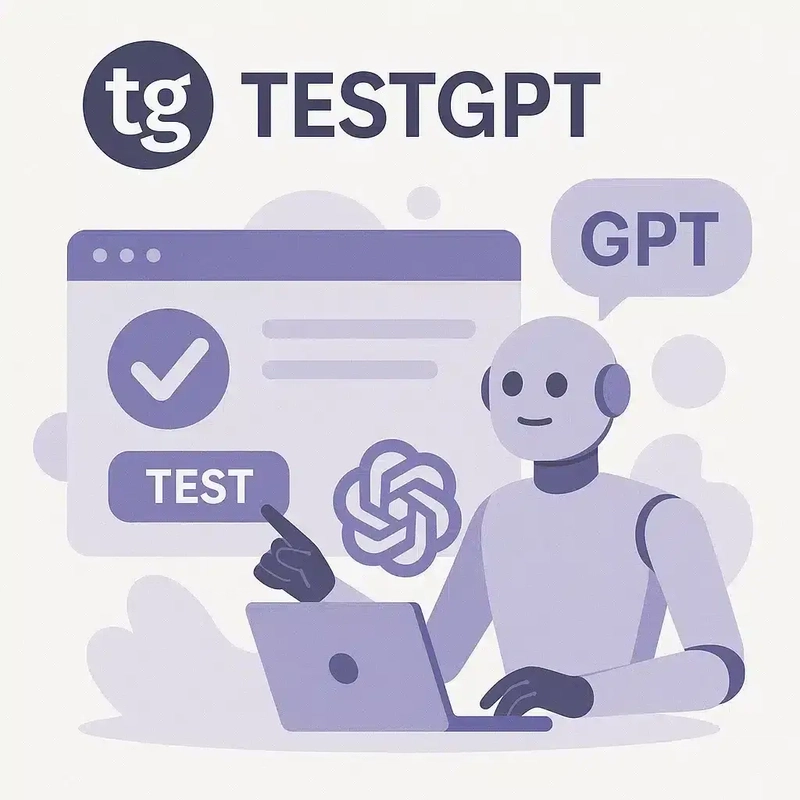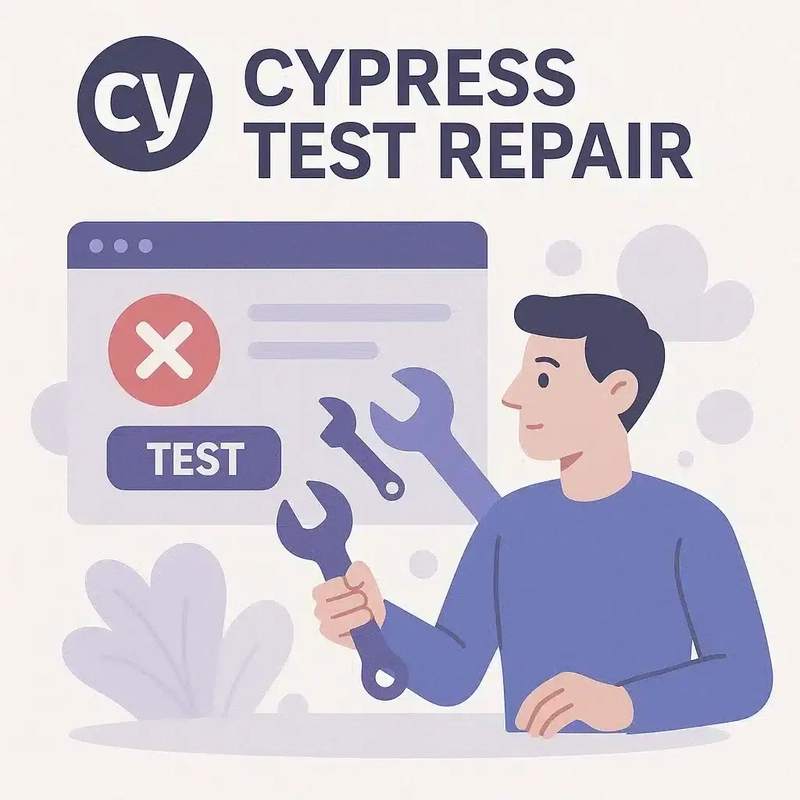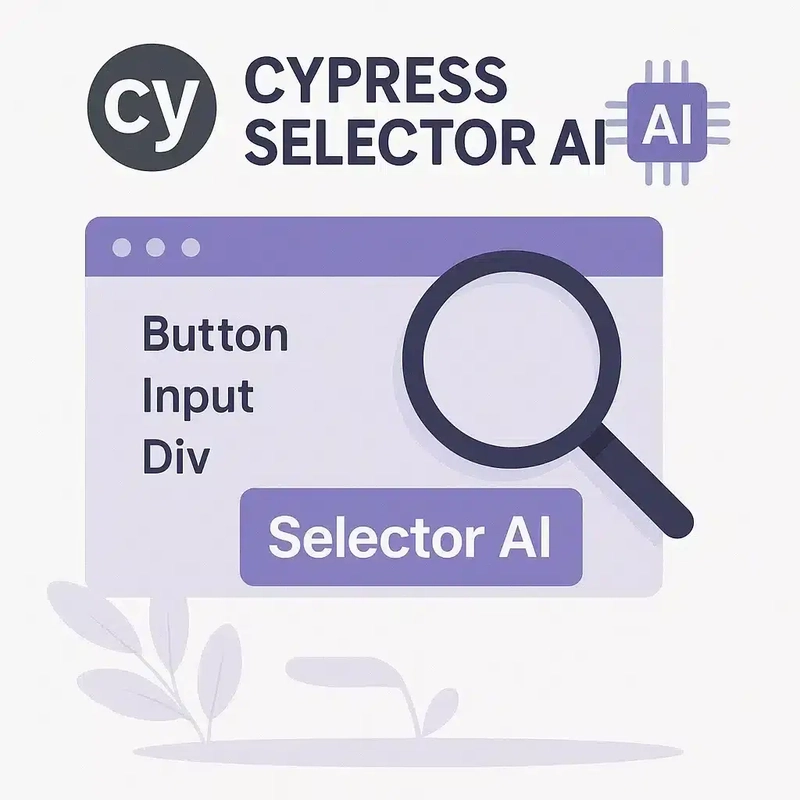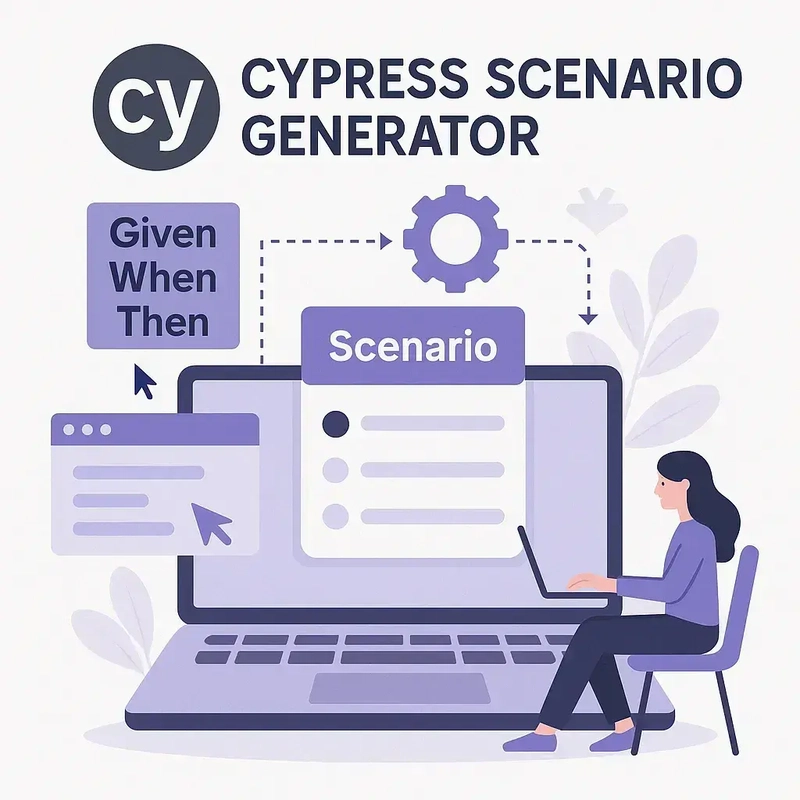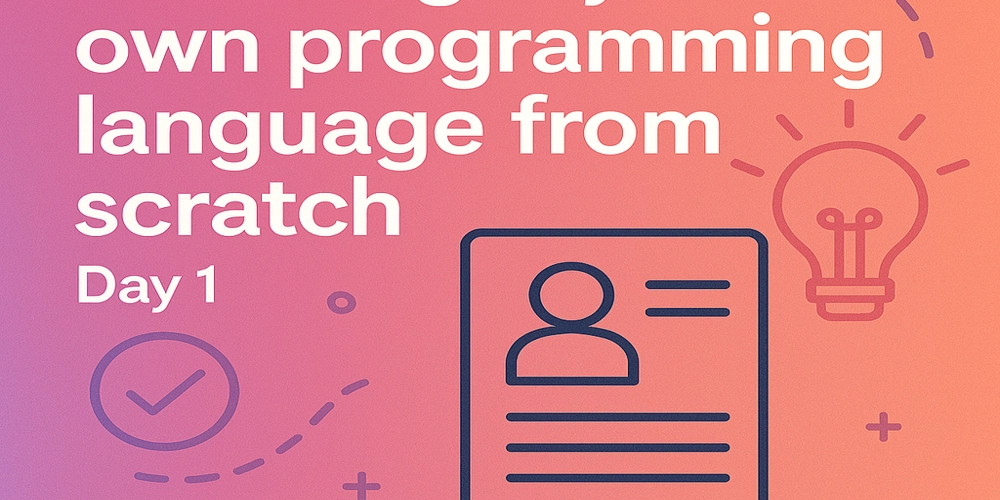Supercharge Your Testing: 5 Free Cypress AI Tools That Actually Work
Automated testing with Cypress has revolutionized how developers ensure code quality, but writing comprehensive test suites remains time-consuming and often tedious. Artificial intelligence tools for Cypress testing are emerging as game-changers, dramatically reducing test creation time while maintaining quality. Let's face it—writing tests can be a real drag. After you've spent days coding a beautiful feature, the last thing you want to do is spend another day writing tests for it. That's why I've been obsessed with finding AI tools that can make Cypress testing less painful (and maybe even fun?). After weeks of trying every free tool I could get my hands on, I've compiled this no-nonsense guide to the AI assistants that actually delivered results—not just promises. Why AI + Cypress = Testing Magic Before we dive into the tools, let's address the elephant in the room: Can AI really write good tests? The answer is... mostly yes, with human guidance. Think of these tools as your testing co-pilot, not your replacement. They excel at generating the boilerplate code that makes you want to bang your head against the keyboard, while you focus on the test logic that requires your developer brain. 1. Cypress Assistant - The Rookie's Best Friend Cypress Assistant is my go-to recommendation for developers just getting started with Cypress. This free browser extension watches as you interact with your application and generates test code on the fly. Key Features: Interaction recording: Captures clicks, typing, and other user actions as you naturally use your application Translates these actions into syntactically correct Cypress commands Selector optimization: Intelligently identifies the most reliable selectors for elements Prioritizes data-test attributes when available for more stable tests javascript // Generated by Cypress Assistant while I clicked through my registration flow describe('User Registration', () => { it('should register a new user successfully', () => { cy.visit('/register'); cy.get('[data-test="name-input"]').type('John Doe'); cy.get('[data-test="email-input"]').type('john@example.com'); cy.get('[data-test="password-input"]').type('SecurePassword123'); cy.get('[data-test="register-button"]').click(); cy.url().should('include', '/dashboard'); cy.contains('Welcome, John').should('be.visible'); }); }); The real magic happens when you're testing complex UI flows. Instead of manually typing out 20+ lines of selectors and actions, you simply use your app while the extension watches. When you're done, you have a working test that just needs a little cleanup. Pro tip: Use data-test attributes in your HTML elements to make the generated selectors more reliable and maintainable. 2. TestGPT - From Requirements to Tests TestGPT takes a completely different approach. Instead of watching your actions, it generates tests based on written requirements or user stories. I was skeptical at first (who isn't tired of AI hype?), but the results were impressive. Key Features: Natural language processing: Interprets plain English requirements and user stories Extracts testable scenarios and acceptance criteria Test skeleton generation: Creates logically structured test outlines with appropriate setup and teardown Includes placeholders for application-specific selectors For example, I gave TestGPT this user story: As a user, I want to filter products by price range so that I can find items within my budget. And it generated this test skeleton: javascript describe('Product Filtering', () => { beforeEach(() => { cy.visit('/products'); }); it('should filter products by price range', () => { // Find and interact with price range filter cy.get('[data-test="min-price"]').clear().type('50'); cy.get('[data-test="max-price"]').clear().type('150'); cy.get('[data-test="apply-filter"]').click(); // Verify filtered results cy.get('[data-test="product-price"]').each(($price) => { const price = parseFloat($price.text().replace('$', '')); expect(price).to.be.at.least(50); expect(price).to.be.at.most(150); }); }); }); I needed to adjust the selectors for my specific app, but the logic was solid. This saved me at least 20 minutes of thinking through the test flow. 3. Cypress Test Repair - The Bug Squasher We've all been there—your CI pipeline is screaming red because a test suddenly started failing after a UI change. Cypress Test Repair analyzes failing tests and suggests fixes. Key Features: Failure analysis: Examines test error logs and screenshots to determine failure causes Categorizes issues (selector problems, timing issues, assertion errors) Intelligent fix suggestions: Offers multiple potential solutions with confidence ratings Explains the reasoning behind each suggestion Self-healing capabilities: Can be configured
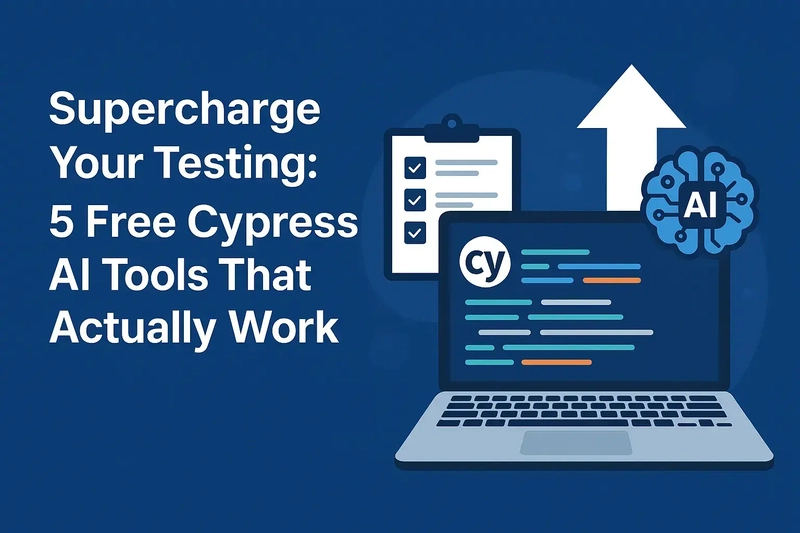

Automated testing with Cypress has revolutionized how developers ensure code quality, but writing comprehensive test suites remains time-consuming and often tedious. Artificial intelligence tools for Cypress testing are emerging as game-changers, dramatically reducing test creation time while maintaining quality. Let's face it—writing tests can be a real drag. After you've spent days coding a beautiful feature, the last thing you want to do is spend another day writing tests for it. That's why I've been obsessed with finding AI tools that can make Cypress testing less painful (and maybe even fun?).
After weeks of trying every free tool I could get my hands on, I've compiled this no-nonsense guide to the AI assistants that actually delivered results—not just promises.
Why AI + Cypress = Testing Magic
Before we dive into the tools, let's address the elephant in the room: Can AI really write good tests? The answer is... mostly yes, with human guidance.
Think of these tools as your testing co-pilot, not your replacement. They excel at generating the boilerplate code that makes you want to bang your head against the keyboard, while you focus on the test logic that requires your developer brain.
1. Cypress Assistant - The Rookie's Best Friend
Cypress Assistant is my go-to recommendation for developers just getting started with Cypress. This free browser extension watches as you interact with your application and generates test code on the fly.
Key Features:
-
Interaction recording:
- Captures clicks, typing, and other user actions as you naturally use your application
- Translates these actions into syntactically correct Cypress commands
-
Selector optimization:
- Intelligently identifies the most reliable selectors for elements
- Prioritizes data-test attributes when available for more stable tests
javascript
// Generated by Cypress Assistant while I clicked through my registration flow
describe('User Registration', () => {
it('should register a new user successfully', () => {
cy.visit('/register');
cy.get('[data-test="name-input"]').type('John Doe');
cy.get('[data-test="email-input"]').type('john@example.com');
cy.get('[data-test="password-input"]').type('SecurePassword123');
cy.get('[data-test="register-button"]').click();
cy.url().should('include', '/dashboard');
cy.contains('Welcome, John').should('be.visible');
});
});
The real magic happens when you're testing complex UI flows. Instead of manually typing out 20+ lines of selectors and actions, you simply use your app while the extension watches. When you're done, you have a working test that just needs a little cleanup.
Pro tip: Use data-test attributes in your HTML elements to make the generated selectors more reliable and maintainable.
2. TestGPT - From Requirements to Tests
TestGPT takes a completely different approach. Instead of watching your actions, it generates tests based on written requirements or user stories. I was skeptical at first (who isn't tired of AI hype?), but the results were impressive.
Key Features:
-
Natural language processing:
- Interprets plain English requirements and user stories
- Extracts testable scenarios and acceptance criteria
-
Test skeleton generation:
- Creates logically structured test outlines with appropriate setup and teardown
- Includes placeholders for application-specific selectors
For example, I gave TestGPT this user story:
As a user, I want to filter products by price range so that I can find items within my budget.
And it generated this test skeleton:
javascript
describe('Product Filtering', () => {
beforeEach(() => {
cy.visit('/products');
});
it('should filter products by price range', () => {
// Find and interact with price range filter
cy.get('[data-test="min-price"]').clear().type('50');
cy.get('[data-test="max-price"]').clear().type('150');
cy.get('[data-test="apply-filter"]').click();
// Verify filtered results
cy.get('[data-test="product-price"]').each(($price) => {
const price = parseFloat($price.text().replace('$', ''));
expect(price).to.be.at.least(50);
expect(price).to.be.at.most(150);
});
});
});
I needed to adjust the selectors for my specific app, but the logic was solid. This saved me at least 20 minutes of thinking through the test flow.
3. Cypress Test Repair - The Bug Squasher
We've all been there—your CI pipeline is screaming red because a test suddenly started failing after a UI change. Cypress Test Repair analyzes failing tests and suggests fixes.
Key Features:
-
Failure analysis:
- Examines test error logs and screenshots to determine failure causes
- Categorizes issues (selector problems, timing issues, assertion errors)
-
Intelligent fix suggestions:
- Offers multiple potential solutions with confidence ratings
- Explains the reasoning behind each suggestion
-
Self-healing capabilities:
- Can be configured to automatically apply high-confidence fixes
- Creates more resilient tests that adapt to UI changes
-
Historical learning:
- Improves recommendations based on which fixes worked previously
- Adapts to your specific application patterns
For example, when our team changed a button from:
xml
To:
xml
Our test was failing with the classic cy.get('#submit-form') failed to find an element error. Cypress Test Repair suggested:
javascript
// Original failing code
cy.get('#submit-form').click();
// Suggested fix
cy.contains('button', /submit|save/i).click();
// Alternative: cy.get('[data-cy="submit-button"]').click();
The tool doesn't always get it perfect, but it provides a starting point that's better than staring at a failing test wondering what changed.
4. Cypress Selector AI - No More Selector Headaches
Selector AI does exactly what the name suggests—it helps you write better selectors. Give it a screenshot or description of the element you want to target, and it suggests multiple selector strategies.
What I love about this tool is that it doesn't just give you the quickest selector (which is often brittle), but it suggests options prioritizing:
Data attributes (data-test, data-cy)
Semantic selectors (button[type="submit"])
Text content (contains('Sign up'))
CSS classes (as a last resort)
This approach aligns perfectly with Cypress best practices and creates more maintainable tests.
Key Features:
Intelligent selector analysis: Examines DOM structure to find unique identifiers for elements
Visual element selection: Simply click on elements in a screenshot to get selector suggestions
Selector ranking: Provides multiple options ordered by reliability and best practices
Here's a practical example of how it works:
javascript
// Instead of this brittle selector:
cy.get('.form-row:nth-child(3) div.col-md-6:first-child input');
// Selector AI suggests these more reliable options:
cy.get('[data-test="email-input"]'); // Best option if available
cy.get('input[type="email"][name="contact"]'); // Semantic approach
cy.get('input').contains('Email address'); // Content-based approach
The tool also provides valuable feedback on your existing selectors, flagging those that might cause maintenance issues down the line. For instance, it identified this problematic selector in our test suite:
javascript
// Flagged as brittle by Selector AI:
cy.get('.btn-blue').click();
// Suggested alternatives:
cy.get('[data-cy="submit-form"]').click();
cy.contains('button', 'Submit').click();
5. Cypress Scenario Generator - For Edge Cases
The last tool in my arsenal is Cypress Scenario Generator. Unlike the others, this one is focused on generating test scenarios rather than code.
Tell it about your feature, and it will brainstorm edge cases you should test. For a login form, it suggested:
Test with valid credentials
Test with invalid username
Test with invalid password
Test with empty fields
Test password masking
Test remember me functionality
Test account lockout after multiple failed attempts
Test XSS prevention in the login fields
Key Features:
-
Comprehensive scenario coverage:
- Identifies both happy paths and edge cases based on feature descriptions
- Suggests test scenarios categorized by criticality and complexity
-
Domain-specific intelligence:
- Adapts recommendations based on the type of feature (authentication, shopping cart, file upload, etc.)
- Suggests security and performance testing scenarios specific to your application type
For example, when I described a login form to the tool, it not only suggested test scenarios but also provided code templates for implementing each one:
javascript
describe('User Authentication', () => {
beforeEach(() => {
cy.visit('/login');
});
it('should login successfully with valid credentials', () => {
cy.get('[data-test="username"]').type('validUser');
cy.get('[data-test="password"]').type('validPassword123');
cy.get('[data-test="login-button"]').click();
// Assertions for successful login
cy.url().should('include', '/dashboard');
cy.get('[data-test="welcome-message"]').should('contain', 'Welcome, validUser');
});
it('should show error with invalid username', () => {
cy.get('[data-test="username"]').type('nonExistentUser');
cy.get('[data-test="password"]').type('validPassword123');
cy.get('[data-test="login-button"]').click();
// Assertions for invalid username error
cy.get('[data-test="error-message"]').should('be.visible');
cy.get('[data-test="error-message"]').should('contain', 'Invalid username or password');
});
it('should prevent XSS attacks in login fields', () => {
const xssPayload = '';
cy.get('[data-test="username"]').type(xssPayload);
cy.get('[data-test="password"]').type('anyPassword');
cy.get('[data-test="login-button"]').click();
// Verify XSS payload is not executed but handled safely
cy.get('body').should('not.contain', 'alert("XSS")');
});
// Additional test scenarios would continue here...
});
This might seem obvious for a login form, but for complex features, it has suggested scenarios I completely overlooked.
The Human Touch Still Matters
As helpful as these AI tools are, they're not replacing thoughtful test design. They're best used to:
Speed up the initial test creation
Help identify edge cases
Fix broken selectors
Generate boilerplate code
You'll still need to review the generated tests, add assertions that truly validate your application's behavior, and maintain your test suite as your application evolves.
Conclusion
AI-assisted Cypress testing tools represent a significant advancement in how we approach front-end quality assurance. These five free tools demonstrate that even without a substantial budget, teams can leverage artificial intelligence to create more robust, maintainable test suites in less time.
The key to success lies in finding the right balance - using these tools to eliminate the tedious aspects of test creation while applying your developer expertise to ensure tests truly validate what matters in your application.
Start small by incorporating one tool into your workflow, then gradually expand as you become comfortable with the AI-assisted approach. Monitor the impact on both test creation speed and test quality to fine-tune your process.
Frequently Asked Questions
Q: Do I need machine learning expertise to use these AI testing tools?
A: No. All the tools mentioned are designed with developer experience in mind and require no AI or ML expertise. They present familiar interfaces that integrate with your existing Cypress workflows.
Q: Will these AI tools work with my custom Cypress commands and plugins?
A: Most tools can recognize and work with custom commands, though you may need to provide examples or documentation to help the AI understand custom functionality. Test the compatibility with a small subset of tests before fully integrating.
Q: How accurate are the tests generated by these AI tools?
A: Accuracy varies by tool and use case. Generally, the generated tests provide 70-90% of what you need, requiring some human refinement for application-specific logic and assertions. The tools excel at structure and selectors but may need help with complex business logic.
Q: Can these tools help with converting existing manual tests to Cypress tests?
A: Yes, particularly TestGPT and Cypress Assistant. You can either describe your manual test steps to TestGPT or perform them while Cypress Assistant records, then refine the generated code.
Q: Are there privacy concerns with using these AI tools?
A: Some tools process your code or application data through cloud services. Check each tool's privacy policy before using it with sensitive codebases. Several offer offline or self-hosted options for enterprise environments.
Q: How do these free tools compare to paid alternatives?
A: The free tiers provide core functionality sufficient for individual developers or small teams. Paid options typically offer additional features like CI/CD integration, team collaboration tools, and higher usage limits. Start with the free versions to evaluate the value before investing in premium options.

































































































































































![[The AI Show Episode 145]: OpenAI Releases o3 and o4-mini, AI Is Causing “Quiet Layoffs,” Executive Order on Youth AI Education & GPT-4o’s Controversial Update](https://www.marketingaiinstitute.com/hubfs/ep%20145%20cover.png)


![[The AI Show Episode 143]: ChatGPT Revenue Surge, New AGI Timelines, Amazon’s AI Agent, Claude for Education, Model Context Protocol & LLMs Pass the Turing Test](https://www.marketingaiinstitute.com/hubfs/ep%20143%20cover.png)













































































































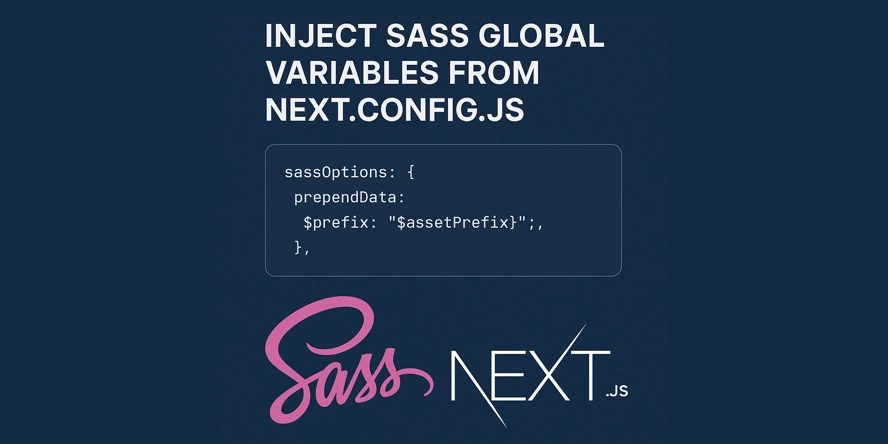


































































































































.png?width=1920&height=1920&fit=bounds&quality=70&format=jpg&auto=webp#)
.png?width=1920&height=1920&fit=bounds&quality=70&format=jpg&auto=webp#)


































































































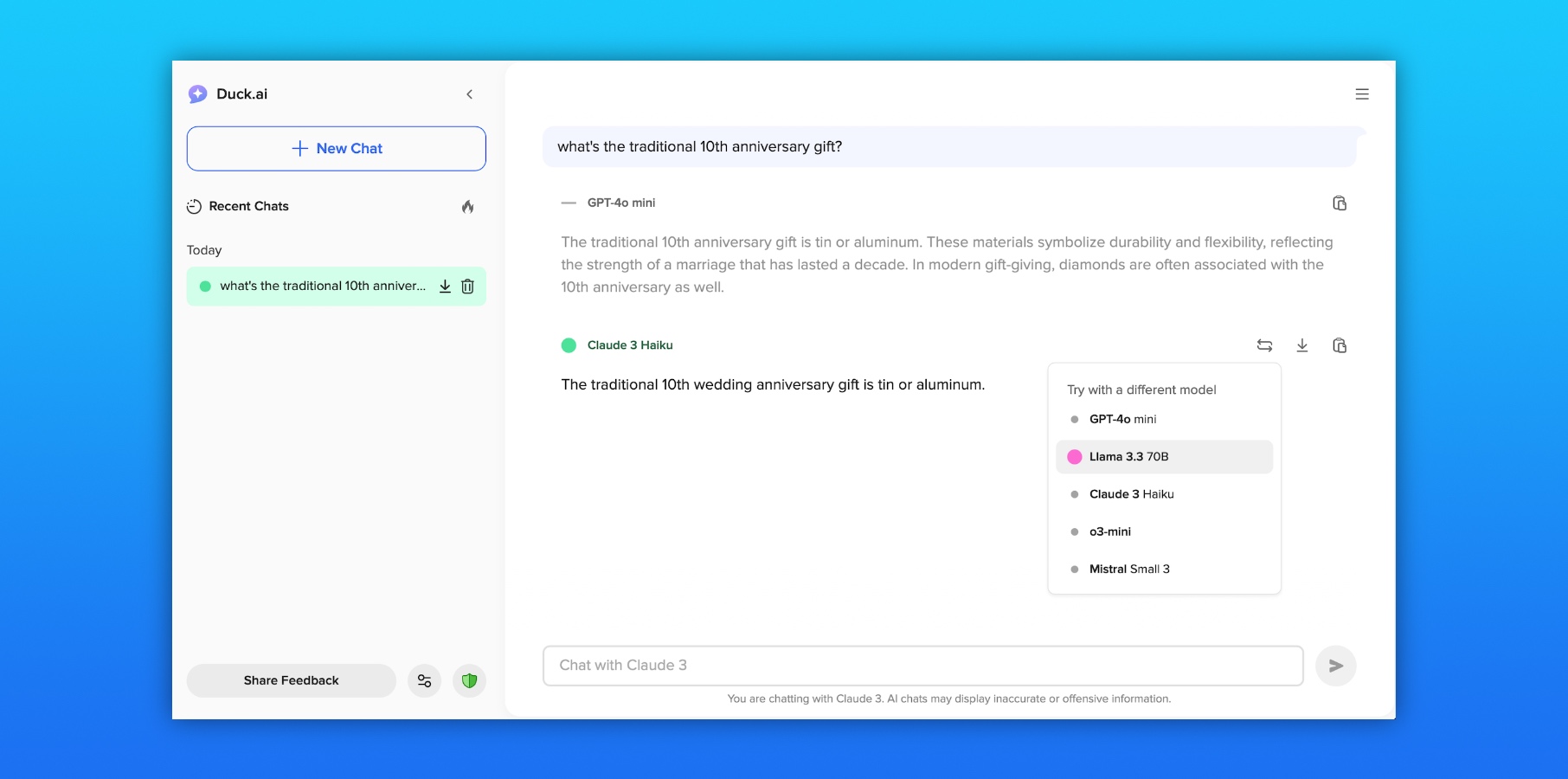








































![AirPods Pro 2 With USB-C Back On Sale for Just $169! [Deal]](https://www.iclarified.com/images/news/96315/96315/96315-640.jpg)
![Apple Releases iOS 18.5 Beta 4 and iPadOS 18.5 Beta 4 [Download]](https://www.iclarified.com/images/news/97145/97145/97145-640.jpg)
![Apple Seeds watchOS 11.5 Beta 4 to Developers [Download]](https://www.iclarified.com/images/news/97147/97147/97147-640.jpg)































































































